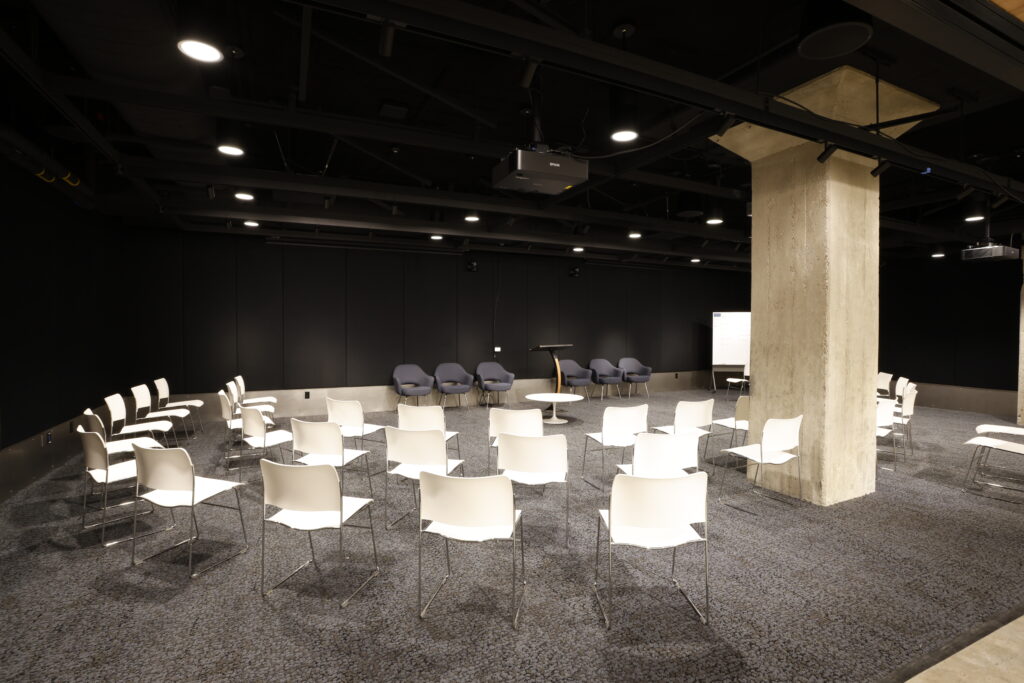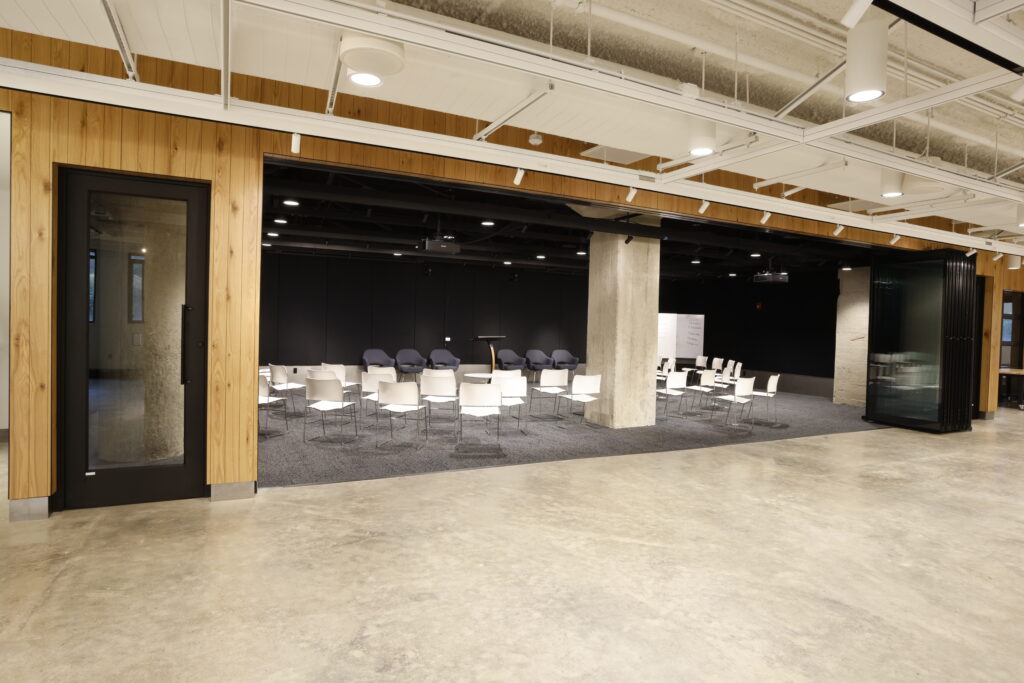First-floor grand opening marks formal completion of seven-story, 50,000-square-foot creative and entrepreneurial space for university and expanding community use
Case Western Reserve University’s Sears think[box], the largest open-access makerspace and innovation center in the United States, is further expanding free public access this week with the opening of its 5,000-square-foot Community Floor.
The Aug. 9 (5:30-8 p.m.) grand opening of the first floor also marks the formal completion of the university’s innovative, seven-story makerspace. Case Western Reserve President Eric W. Kaler and Interim Provost and Executive Vice President Joy Ward will be among the speakers. The event is open to the public, but pre-registration is required.
The newly renovated first floor will provide an area for community innovators, inventors and entrepreneurs to engage with others by hosting events, programs or workshops. It features an auditorium, two activity rooms and an exhibition area.

The Community Floor also serves as another entry point for the community to enter what think[box] officials call its “entrepreneurial ecosystem” within the confines of the iconic seven-story Richey-Mixon Building on the CWRU campus at 11201 Cedar Ave.
The building welcomes community users to all dedicated areas on other floors for prototyping and fabrication equipment, space to brainstorm, referrals for legal and business support to commercialize intellectual property, and staff to provide guidance throughout the building.
Think[box] is accessible from the university’s Case Quad (via a Veale Center walkway to the second floor) and from the ground floor from Cedar Road to the west. That dual access aligns with the university’s priority to further engage with the surrounding community.

“Sears think[box] provides an open-access environment rich in tools with knowledgeable guides and welcomes a diverse community,” said Ainsley Buckner, director of prototyping, art and community engagement at think[box]. “The completion of the Community Floor highlights the commitment we have made to public access since we opened in 2012. These facilities complement the rest of our offerings by providing space for programming and events. The activities on this floor will foster and support creativity and exploration of ideas for our community.”
More than half-a-million visits
The think[box] project began in 2012 in another building on campus and moved into its current home in the Richey-Mixon building in 2015.
Since 2012, students, staff and others have begun startups that changed the trajectory of their careers; researchers have forged new partnerships and proven ideas viable; industry partners have discovered space to find new inspiration; and community members have turned part-time tinkering into full-time “doing.”
Student startups launched with think[box] have included: CLEANR, a company that developed a filter to remove microplastics from washing machines to protect the environment; Path Robotics, which created a robotic welding system using image- processing techniques to find and weld seams; and Specter Aerospace (formerly FGC Plasma Solutions), the founder of which invented a device that shoots a type of ionized gas into jet-engine fuel, improving efficiency and lowering emissions.
Some more facts about think[box]:
- Sears think[box] has had about 519,000 visits since 2012; about one-fourth are not affiliated with the university (members of the public using the facility).
- Laser cutters and desktop 3D printers are the most popular equipment.
- About 75% of students who knew about think[box] while choosing which university to attend said think[box] was a factor in their decision, according to the most recent annual survey.
For more information, contact Bill Lubinger at william.lubinger@case.edu.
This article was originally published Aug. 7, 2023.

![Photo of new Community Floor at think[box]](https://thedaily.case.edu/wp-content/uploads/2023/08/thinkbox-community-feat.jpg)